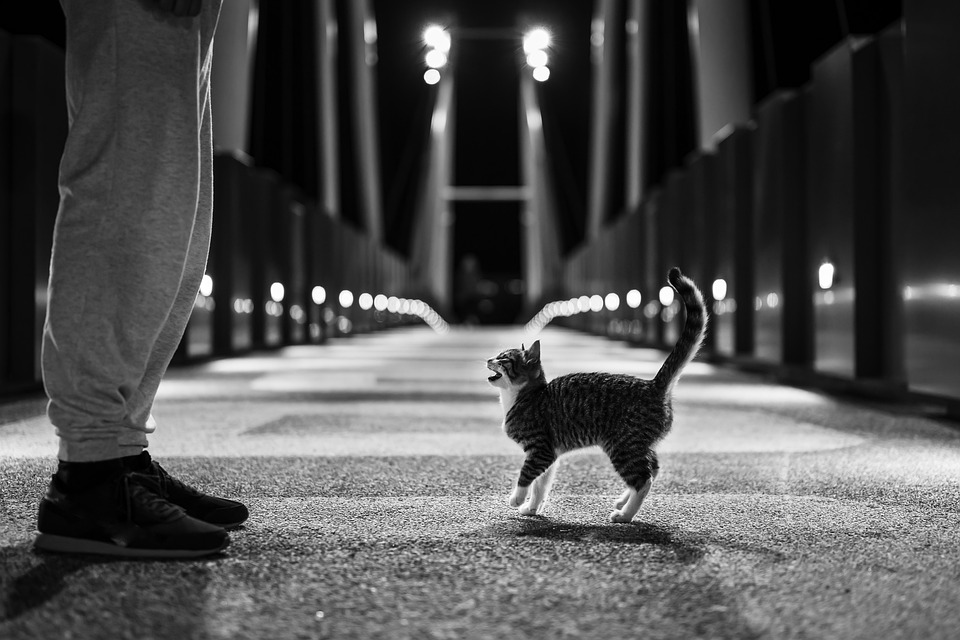Cats are mysterious creatures, known for their independent nature and enigmatic behavior. While they may seem aloof at times, it’s essential to remember that our feline friends can experience stress just like we do. Recognizing the signs of stress in cats is crucial for their overall well-being. In this article, we will explore the subtle cues that indicate your furry companion might be feeling overwhelmed, anxious, or stressed. By understanding these signs, you can take proactive steps to alleviate stress and create a harmonious environment for your beloved feline.
Behavioral Changes: Delving into the Cat’s World
Cats communicate their emotions primarily through their behavior. By closely observing your cat’s actions, you can gain valuable insights into their emotional state. Here are some common behavioral changes to look out for:
1. Increased Aggression or Irritability: If your usually friendly cat becomes aggressive or easily irritated, it could be a sign of stress. Watch out for hissing, growling, or swatting.
2. Excessive Grooming: While grooming is a normal part of a cat’s routine, excessive grooming or licking, especially in one specific area, could indicate stress. This behavior can lead to hair loss or skin irritation.
3. Withdrawal or Hiding: Cats often seek solitude when they feel stressed. If your cat starts hiding more frequently or avoids interactions, it might be a sign that they are overwhelmed.
4. Changes in Appetite: Stress can affect a cat’s appetite, causing either a decrease or an increase in food consumption. Pay attention to any sudden changes in eating habits.
5. Litter Box Issues: Cats may exhibit inappropriate elimination behaviors, such as urinating outside the litter box or defecating in unusual places, when they are stressed.
Physical Indicators: Unveiling the Subtle Clues
Apart from behavioral changes, cats may also display physical signs of stress. By paying attention to these indicators, you can gain a deeper understanding of your cat’s emotional well-being. Here are some physical signs of stress to watch for:
1. Excessive Shedding: Stress can trigger excessive shedding in cats. If you notice an increase in hair on your furniture or clothing, it might be a sign that your feline friend is feeling stressed.
2. Changes in Body Posture: Cats may adopt defensive body postures when they feel threatened or stressed. Look for flattened ears, a lowered body stance, or a tucked tail.
3. Piloerection: Piloerection, commonly known as “puffed-up fur,” occurs when a cat’s fur stands on end. This response is an instinctual reaction to fear or stress.
4. Digestive Issues: Stress can lead to digestive problems in cats, including diarrhea or constipation. Keep an eye on your cat’s litter box habits and any changes in stool consistency.
FAQs: Unraveling the Mysteries of Cat Stress
Q1. How can I help reduce my cat’s stress levels?
A1. There are various strategies to alleviate stress in cats. Creating a safe and secure environment, providing appropriate hiding spots, engaging in playtime, and maintaining a consistent routine can all contribute to reducing stress. Additionally, pheromone diffusers or calming supplements may be beneficial.
Q2. What are some common causes of stress in cats?
A2. Cats can experience stress due to various factors, including changes in their environment (e.g., moving to a new home), conflicts with other animals, loud noises, illness, or lack of mental stimulation. Identifying the specific cause is essential for effectively managing stress.
Q3. When should I consult a veterinarian about my cat’s stress?
A3. If you notice persistent signs of stress in your cat or if the stress is significantly affecting their quality of life, it is advisable to consult a veterinarian. They can help identify the underlying cause and recommend appropriate interventions.
Q4. Can stress lead to health problems in cats?
A4. Yes, chronic stress can have detrimental effects on a cat’s health. It can weaken their immune system, increase the risk of developing urinary tract issues, exacerbate existing medical conditions, and negatively impact their overall well-being.
By understanding the signs of stress in cats and taking proactive measures to alleviate it, you can ensure a happier and healthier life for your feline companion. Remember, your cat’s well-being is in your hands, and decoding their secret language is the key to building a strong bond and a stress-free environment.








